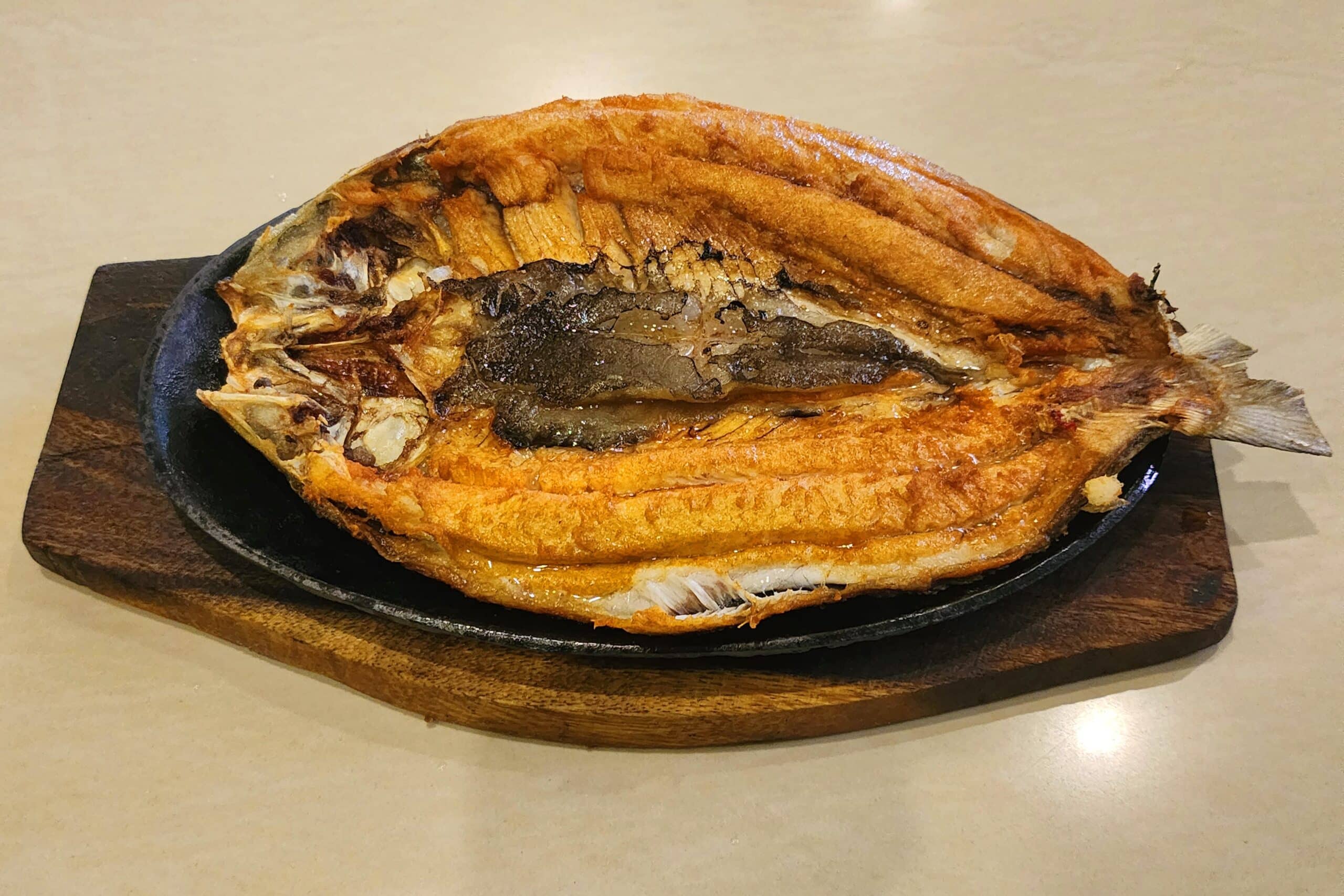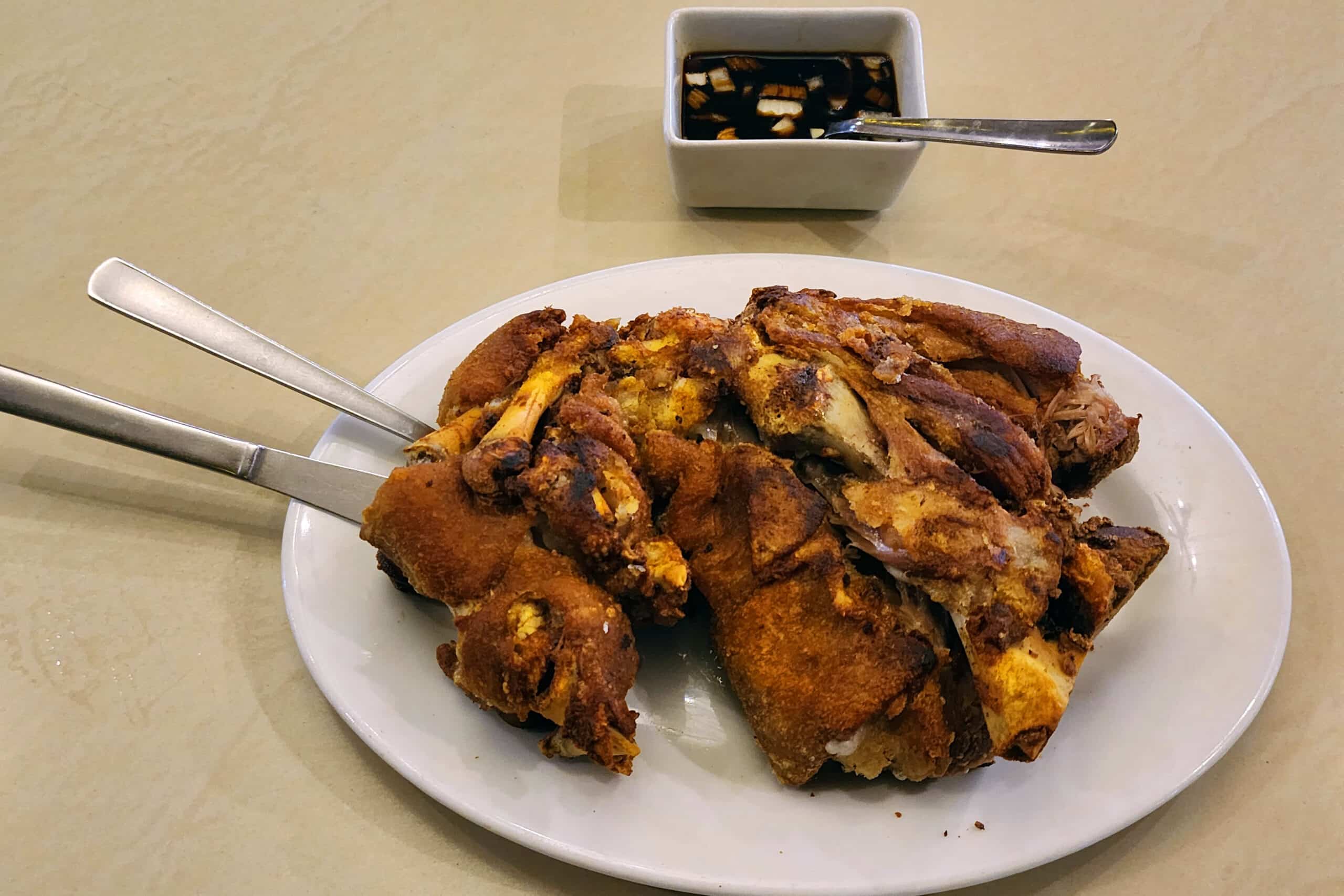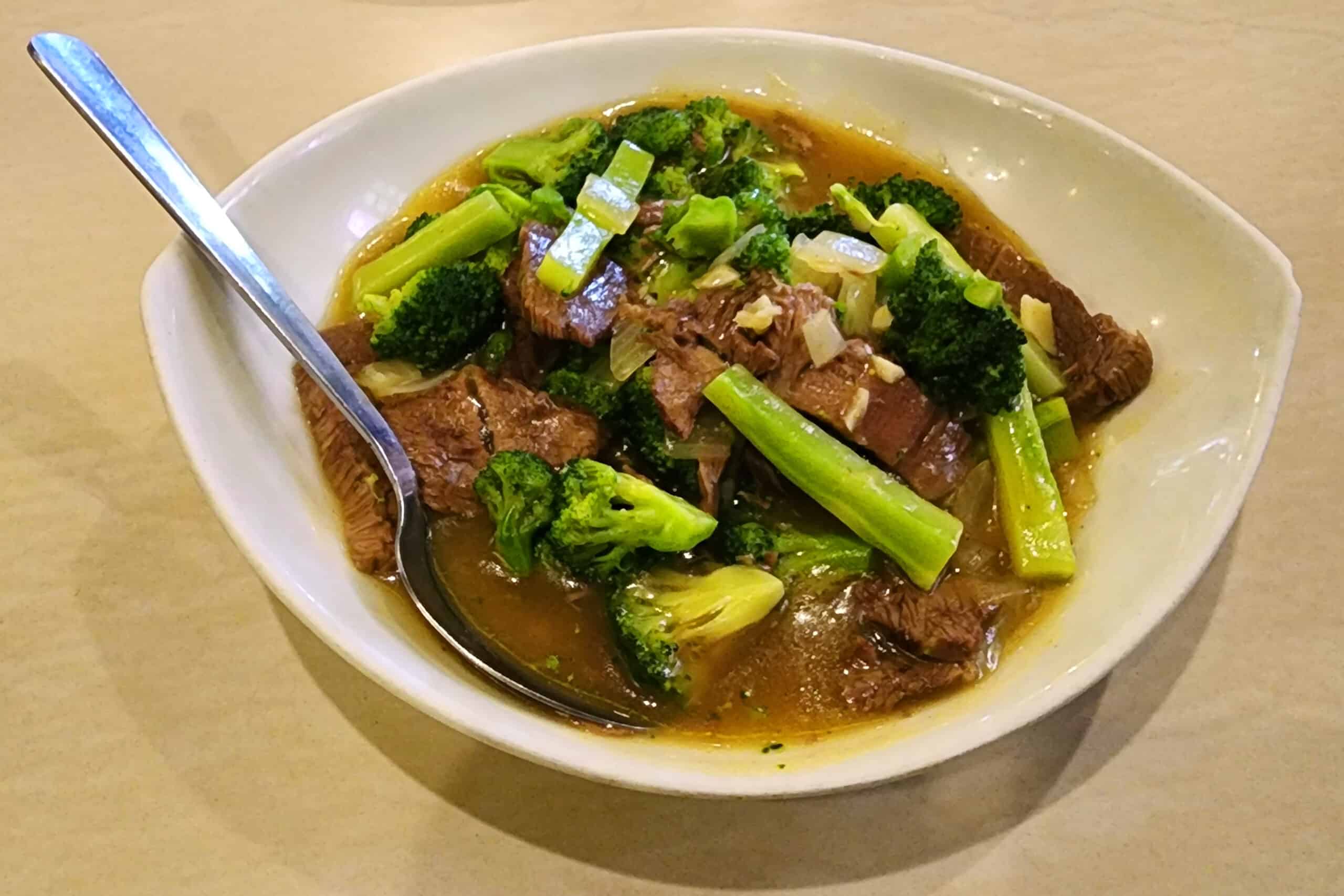Dagupeña Restaurant: A century of tradition, family, flavors

FEELS LIKE HOME The portrait of the late Emma Bernal Castro looms large at the main dining hall of the 96-year-old Dagupeña Restaurant, which she managed until her death in 2013. The restaurant, now operating in Calasiao, Pangasinan, just in the outskirts of Dagupan City, is like “home” to most patrons who long for the familiar dishes reminiscent of homecooked meals prepared by their parents. —Photos by Willie Lomibao
DAGUPAN CITY, PANGASINAN, Philippines — Dining at Dagupeña Restaurant, for most of its patrons, is like coming home—embracing the cozy, laid-back ambiance and savoring the comfort food reminiscent of childhood meals lovingly prepared by their parents.
For nearly a century, this Pangasinan institution has maintained its warm, homey charm, serving classic Filipino dishes just as Bai (grandmother) Inacia Bernal prepared them when she and her husband, Eusebio, established Carinderia Dagupeña in 1928.
The dishes that Inacia served to city residents during simpler, more tranquil times remain staples on the restaurant’s menu and favorites among diners—“egado,” “relleno,” “pancit sabaw,” “dinuguan” and two signature dishes named in her honor, Bai Inacia’s adobo and Inacia’s “sinigang ya bangus.”
“We follow the original recipes of Bai Inacia, keeping their top quality and distinct taste, and using the freshest ingredients,” said Dr. Anthony Castro, who belongs to the family’s third generation and who now manages the restaurant.
This enduring appeal explains why Dagupeña has cultivated a loyal following, with patrons returning while introducing it to their families and friends, who often become regular customers themselves. Many even bring visitors to experience the restaurant’s unique charm and flavors.
Article continues after this advertisementDespite the proliferation of new dining establishments, Dagupeña remains a standout, proudly holding its place as the go-to restaurant in Pangasinan.
Article continues after this advertisementOver the years, the menu has expanded to include more offerings, but every dish stays true to the essence of Filipino cuisine, enriched with a subtle touch of Spanish influence—a tribute to the flavors that have defined its nearly century-long legacy.
“We do not subscribe to fusion cuisine; we want to offer authentic Filipino heritage food,” Castro said.
The menu includes crispy shrimp, fisherman’s soup, fish steak, escabeche, “binagoongang crispy pata,” “kare-kare,” “caldereta,” and the signature Dagupan bangus prepared in different ways—steak, “daing,” “sisig,” chargrilled pesto belly, “kilawin,” “paksiw” and many more.
The restaurant also offers a selection of “merienda” and desserts, now served in its new location along Calasiao Diversion Road—just a 10-minute drive from its original location at the city center of Dagupan.
Castro said the restaurant had been renting a building in Dagupan but in 2004, the property owners decided to sell it “at a price we couldn’t afford,” prompting the relocation to nearby Calasiao town.
Relocation
He persuaded his mother, Emma, who was managing the restaurant at the time, to relocate to Calasiao, where her sister Placida owned a 4,000-square-meter property. Emma died in 2013.
The relocation seemed like a significant gamble, as the restaurant’s loyal clientele had grown accustomed to its original location.
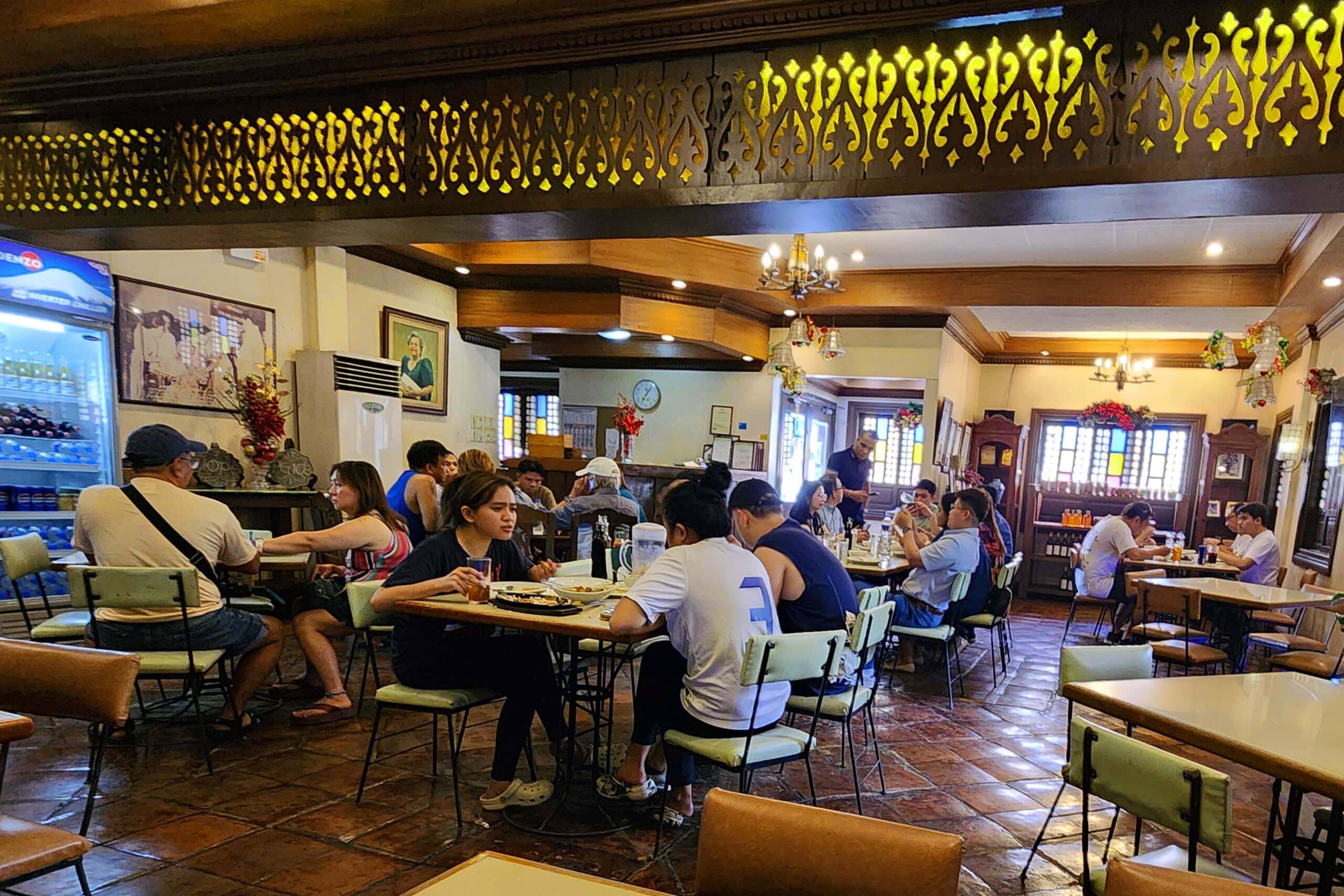
GATHERING The restaurant offers a relaxed atmosphere for families and friends who want to enjoy a meal of authentic Filipino cuisine.
“We assessed the situation and realized that most of our customers owned cars and often had to park by the roadside due to our lack of parking space. The new location offered a spacious parking area, which became a significant advantage,” Castro recalled.
His mother was initially hesitant and experienced separation anxiety, “but we had no choice; we had to move because the building owners decided to sell the property.”
With the help of his engineer-friend Rodolfo Barcellano, Castro constructed the Spanish-inspired single-story building at the new location in just three months.
“My mother was furious when she saw the size of the building, terrified of how the restaurant can afford the monthly amortization for the loan we took from the bank to construct the building,” Castro shared.
Her fears were quickly eased as customers flocked in soon after the opening.
Caring for workers
As it approaches its centennial, Dagupeña remains a family-owned and operated establishment. Its staff—cooks, waiters, busboys—is largely generational, with many current employees being younger family members or friends of retired or deceased employees.
The restaurant also continues the tradition started by Emma by hiring untrained locals or even neighborhood “tambay” (idlers), offering them an opportunity to learn on the job.
“I couldn’t understand why she was hiring them and told her I didn’t agree. But she explained that while I had the privilege of attending the best schools with many opportunities ahead of me, they didn’t have the same chance. Giving them decent jobs was her way of helping them,” he said.
The restaurant had to train, discipline and instill a love for their work in them.
“It is not easy disciplining and training the newly hired personnel. There were times that we had to let go of some employees because of dishonesty and a lack of discipline. Thankfully, most of them imbibed the standards we required of them, and they stayed even when offered higher wages by new restaurants,” Castro shared.
The longest-serving employee is Felix Diga, 57, who has been with Dagupeña for 37 years. He joined at the age of 20 as a waiter. His mother worked as the restaurant’s cashier, while his father, a cook, was battling a terminal illness.
“Madam Emma and Sir Jet (Castro’s nickname) took care of my father’s medical expenses, including surgery at a Manila hospital. Unfortunately, he passed away four months later. Madam Emma then hired me as a waiter, and I eventually took on responsibilities at the counter, handling the cash register and doing bank errands,” Felix shared.
Another employee whose life changed at Dagupeña is Randy “Toyo” Junio. At 21, he was working as a “kargador” (porter) in Divisoria, Manila, when a former Dagupeña employee recommended him for a job as a busboy. After a few months, Castro encouraged him to work in the kitchen as an assistant cook.
“I was terrified because I knew nothing about cooking. But Sir Jet reassured me that the experienced cooks would train me,” he recalled. Now, after 19 years, he has become an expert at preparing dishes like adobo, “sinigang na bangus” and other restaurant favorites.
Dominga “Digs” Vejano has also been with Dagupeña for 25 years, starting as a kitchen helper at 17 with no cooking knowledge. Today, she is one of the main cooks, specializing in desserts, thanks to the training from Castro’s sister, Ann Marie.
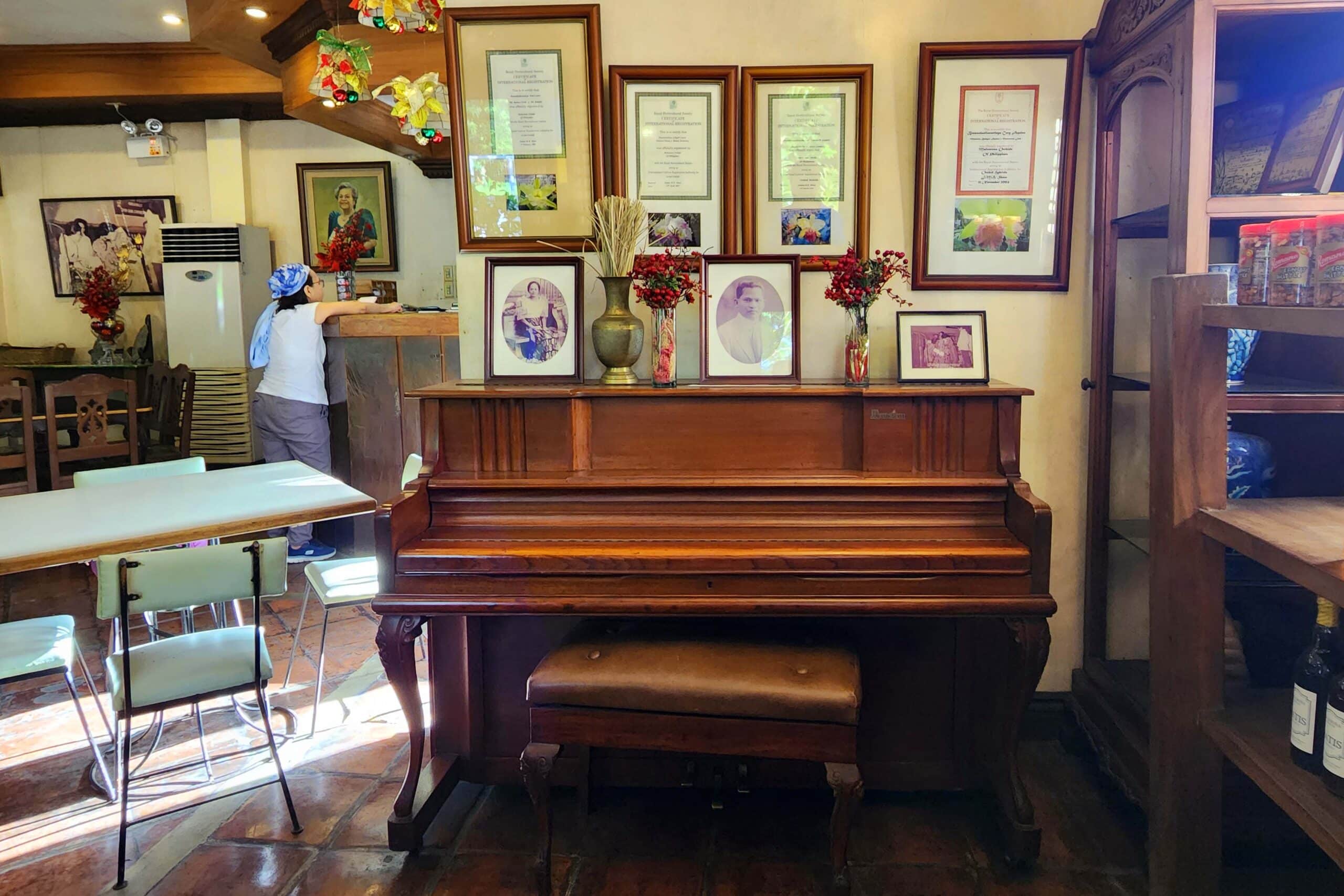
MEMORY NOOK A corner in the restaurant features a piano which can be played by anyone. Atop the piano are photos of couple Bai Inacia and Laki Eusebio, who opened Carinderia Dagupeña in 1928, and of Bai Inacia when she received the Mother of the Year award by the city government in 1974.
Several waiters, including Leonard Lingat, Jimmy Ragma, Larry Catungal and Robert Marquez, have also been with the restaurant for decades. Their loyalty can be attributed to the owners’ care and generosity, as they are treated like family members.
Fresh, ‘slow’
The restaurant, Castro says, continues to source its supplies of meat, fish, vegetables and fruits from small vendors, ensuring quality over price despite offers from bigger suppliers. “We’d rather stick with the vendors my late mother had relied on for supplies,” he said.
While the restaurant’s long wait time sometimes lead to complaints from customers, Castro explains that the delay is due to their commitment to traditional cooking methods.
“We still cook using the old-fashioned stoves, fueled by rice hulls, wood, or coconut husks,” he said.
Castro added: “This slow cooking process is one of the reasons our dishes have that distinct, flavorful taste that sets us apart from others that use gas or electric stoves.”
He added that even when some cooks try to replicate the dishes in other kitchens, they can’t quite match the taste. “Our food is different because it’s cooked slowly on traditional stoves, just like our grandparents used to do. Maybe that’s the Dagupeña magic,” Castro said.
Despite using traditional firewood and rice hulls, the kitchen remains impeccably clean, just as Bai Inacia and Emma insisted it should be.
This commitment to traditional cooking methods is also the reason why, despite the restaurant’s popularity, the owners can’t easily expand into shopping malls, where traditional smoky stoves wouldn’t be allowed. However, Castro hinted at plans to open a branch in Baguio City.
